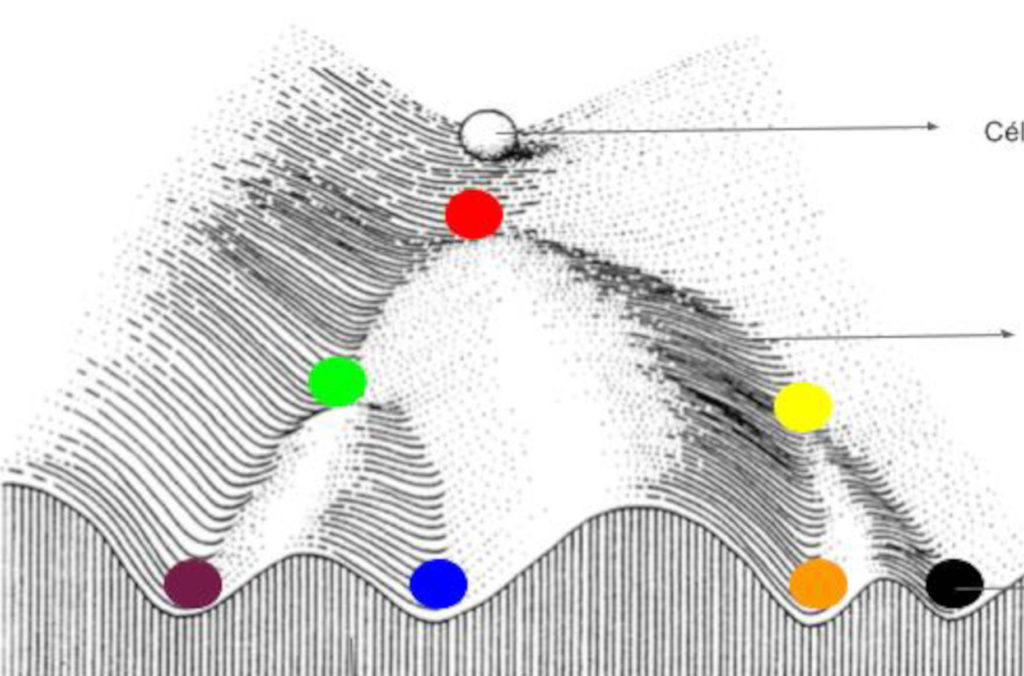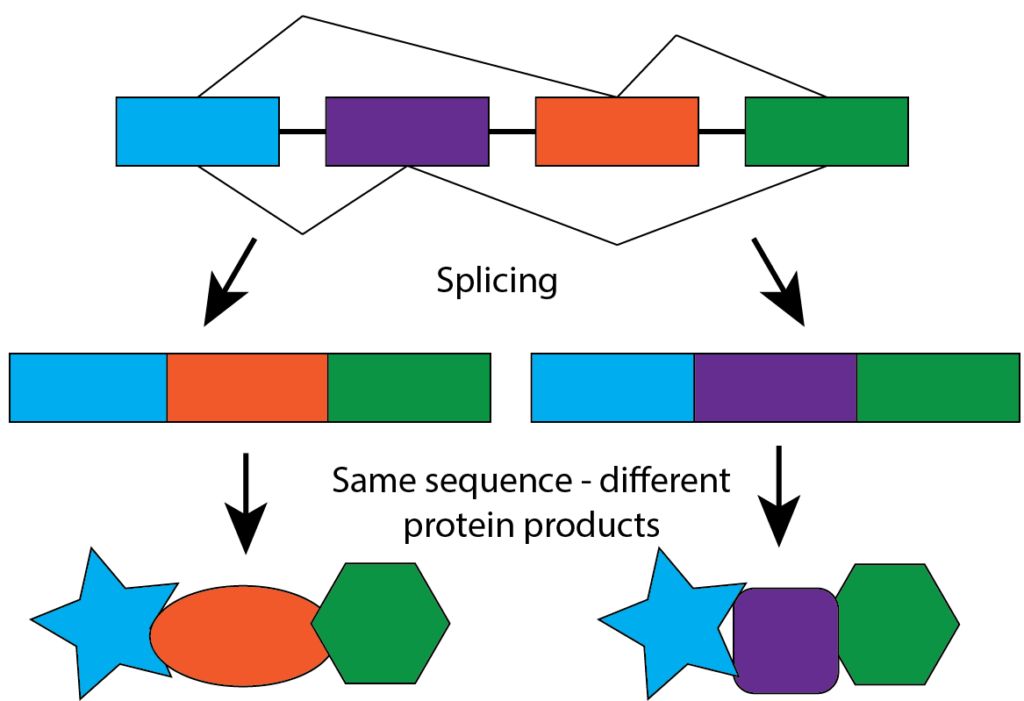Our bodies are marvels of precise control, synchronization and design. Every one of our cells has the same genetic sequence, but we have many different types of cells – heart, muscle, lung, skin. Amazingly, our body has a mechanism to determine which cell is which even though they all share the same code. The field of epigenetics dives into this phenomenon. Epigenetics is a study of changes to DNA that does not change the actual sequence but modify it by repressing or activating certain parts of DNA. In short, epigenetics can reversibly turn genes on and off without changing the DNA sequence.
The genes in our body are like words that have to be spelled a certain way in order for them to work properly. All genes are made up of “base” molecules, which are assigned a specific letter (A, C, G, or T). These bases combine to form 3-letter “words,” or amino acids. Amino acids serve as the “words” that form the “sentences” or proteins in our body that govern all the biological processes necessary for life. However, none of these biological phenomena could be produced if there are misspellings in the genetic code. Mutations are a misspelling of the original genetic code through deleting, duplicating, substituting or inverting parts of a gene. Mutations are permanent changes to the DNA code which can be passed on from generation to generation. This is the cause of many heritable diseases.
For a long time, genetic changes were thought to be permanent, but reversible epigenetic changes were uncovered around 1950 and have led to an explosion of knowledge in understanding the human body. Conrad Waddington was the first scientist to propose the concept of epigenetics. He studied embryonic development and saw how an embryo gave rise to all the different types of cells, even though every cell had the same genetic sequence. He visualized this model with “Waddington’s landscape,” which used the analogy of a marble rolling down a hill into different troughs to represent the developing cell becoming a muscle cell, heart cell or any other cell.

Alternative splicing is one epigenetic mechanism that allows for cells to be able to choose multiple fates. This can happen all over the body, such as in the brain, heart, and muscle. Our body has many genes, but we only use 2% of those genes to code for proteins, the other 98% are genes that help regulate the protein-coding genes. Alternative splicing is one way that we fully utilize the 2% of our genes that code for protein and accounts for our complexity. Splicing allows for the “word” of one gene to be broken up into many different ways to make many other genes. The word “lifetime” can be broken up into ‘life’ and ‘time,’ but can also be rearranged to make the words ‘fit,’ ‘lie,’ and ‘tile.’ The parts of protein-coding genes can be also be broken down and mixed and matched to produce different proteins. The sites for splicing are determined by the tightness of DNA, the accessibility to DNA, and other epigenetic factors that are still being actively researched.

Dr. Jimena Guidice at the University of North Carolina at Chapel Hill is actively investigating the epigenetics of alternative splicing in the heart to try to determine why certain heart diseases cause the heart to revert back to fetal alternative splicing as opposed to adult alternative splicing. A few weeks postnatal, the muscle cells needed to contract the heart are not yet mature and have a different alternative splicing pattern to facilitate growth into adult muscle cells. Eventually, the muscle cells are spliced with a different alternative splicing pattern which is a mark of adult muscle cells since these cells are large and can pump blood to the heart more efficiently.
If you’re interested in reading more about epigenetics and its history, I highly recommend Nessa Carey’s Epigenetics Revolution and Siddhartha Mukherjee’s The Gene.
Peer edited by Deirdre Sackett.
Follow us on social media and never miss an article:
Fantastic! Love science I can understand!